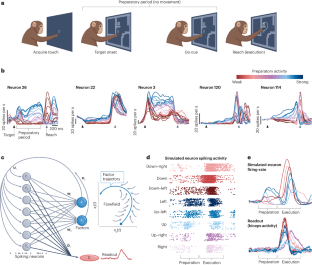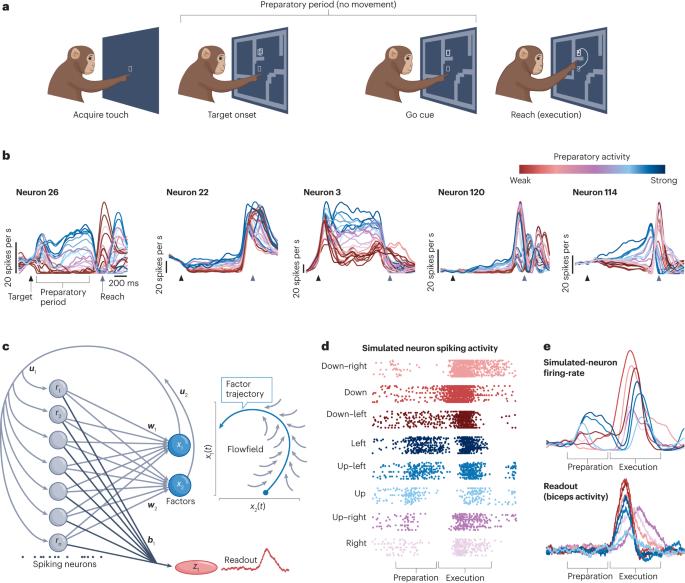Preparatory activity and the expansive null-space
IF 28.7
1区 医学
Q1 NEUROSCIENCES
引用次数: 0
Abstract
The study of the cortical control of movement experienced a conceptual shift over recent decades, as the basic currency of understanding shifted from single-neuron tuning towards population-level factors and their dynamics. This transition was informed by a maturing understanding of recurrent networks, where mechanism is often characterized in terms of population-level factors. By estimating factors from data, experimenters could test network-inspired hypotheses. Central to such hypotheses are ‘output-null’ factors that do not directly drive motor outputs yet are essential to the overall computation. In this Review, we highlight how the hypothesis of output-null factors was motivated by the venerable observation that motor-cortex neurons are active during movement preparation, well before movement begins. We discuss how output-null factors then became similarly central to understanding neural activity during movement. We discuss how this conceptual framework provided key analysis tools, making it possible for experimenters to address long-standing questions regarding motor control. We highlight an intriguing trend: as experimental and theoretical discoveries accumulate, the range of computational roles hypothesized to be subserved by output-null factors continues to expand. How does motor-cortex activity well before movement not drive motor outputs? In this Review, Churchland and Shenoy detail how searching for answers transitioned the understanding of neural activity during movement from single-neuron tuning towards population-level factors and revealed an essential computational role of output-null factors.


准备活动和广阔的虚无空间。
近几十年来,大脑皮层对运动控制的研究经历了一次概念转变,因为理解的基本货币从单神经元调谐转向了群体水平因素及其动态。这一转变得益于人们对递归网络的理解日趋成熟,而递归网络的机制通常是以群体水平因子来描述的。通过从数据中估算因子,实验人员可以测试网络启发的假设。此类假设的核心是 "输出无效 "因子,它们不直接驱动电机输出,但对整体计算至关重要。在这篇综述中,我们将重点介绍输出无效因子假说是如何受到运动皮层神经元在运动开始前的运动准备过程中处于活跃状态这一古老观察结果的启发的。我们讨论了输出无效因子如何成为理解运动过程中神经活动的类似核心。我们将讨论这一概念框架如何提供关键的分析工具,使实验人员有可能解决有关运动控制的长期问题。我们强调了一个引人入胜的趋势:随着实验和理论发现的不断积累,假定输出无效因子所起的计算作用的范围也在不断扩大。
本文章由计算机程序翻译,如有差异,请以英文原文为准。
求助全文
约1分钟内获得全文
求助全文
来源期刊

Nature Reviews Neuroscience
NEUROSCIENCES-
自引率
0.60%
发文量
104
期刊介绍:
Nature Reviews Neuroscience is a multidisciplinary journal that covers various fields within neuroscience, aiming to offer a comprehensive understanding of the structure and function of the central nervous system. Advances in molecular, developmental, and cognitive neuroscience, facilitated by powerful experimental techniques and theoretical approaches, have made enduring neurobiological questions more accessible. Nature Reviews Neuroscience serves as a reliable and accessible resource, addressing the breadth and depth of modern neuroscience. It acts as an authoritative and engaging reference for scientists interested in all aspects of neuroscience.
 求助内容:
求助内容: 应助结果提醒方式:
应助结果提醒方式:


